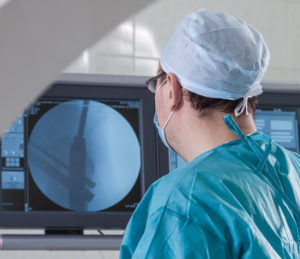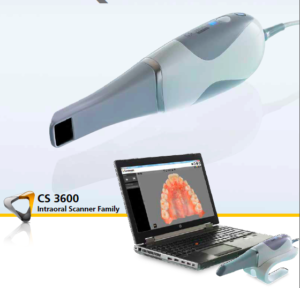Header logo
header top contact widget
Tooth Replacement
Start The New Year With A Smile That Enhances Your Life!
Posted on Dec 31, 2018 by William J. Claiborne, DDS MS
As we look at the new year, many of us are setting goals for positive changes in our lives. Whether we aim to lose weight, tackle an upcoming 10k run, or kick a bad habit, a new year resets our enthusiasm and motivation to improve.
And oft-overlooked area that many Americans should add to their “need to improve” list is caring for their oral health. According to the Centers for Disease Control & Prevention (CDC), over 47 percent of the adult population in the U.S. has some level of periodontal (gum) disease.
So, this year, I’d like you to relook at the list you’ve already made and consider adding “improve oral wellness” to it.
Although a clean, healthy mouth gives you a better-looking smile and fresher breath, there are even more important reasons to maintain excellent gum health. Not only is periodontal disease the nation’s leading cause of adult tooth loss, it has been linked serious health risks. This includes heart disease, high blood pressure, memory loss, arthritis, diabetes, preterm babies and impotency.
Gum disease can begin silently, with warning signs that are not obvious or may be easily ignored. It may be first noticed by sore spots on gum tissues. You may notice some blood in the sink when brushing teeth. Your mouth may feel sticky and you have bad breath more frequently.
When these signs are ignored, gum disease is allowed to progress further. The symptoms of gum disease are:
- Red, swollen or tender gums or other sore areas in your mouth
- Bleeding while brushing or flossing
- Gums that recede or pull away from teeth, causing the teeth to look longer than before
- Loose or separating teeth
- Pus pockets between your gums and teeth
- Persistent bad breath
- A change in the way your teeth fit together when you bite
- A change in the fit of partial dentures
You can also learn about the stages of gum disease on the web site of the American Academy of Periodontology: (https://www.perio.org/consumer/types-gum-disease.html).
Your mouth also sends off warning signs when something is wrong. For example, an ache coming from a tooth may indicate a cavity or crack. A sore spot in the mouth could be caused by a canker sore or warning sign of oral cancer.
Some periodontal needs can be managed by their general dentist. However, as signs of periodontal disease continue, periodontal treatment may require the skills of a specialist. Patients who have moderate or severe levels of periodontal disease, or patients with more complex cases, are often best managed through ‘team treatment’ between a general dentist and periodontal specialist.
The American Academy of Periodontology defines a periodontist as “a dentist who specializes in the prevention, diagnosis, and treatment of periodontal disease, and in the placement of dental implants. Periodontists are also experts in the treatment of oral inflammation. Periodontists receive extensive training in these areas, including three additional years of education beyond dental school. They are familiar with the latest techniques for diagnosing and treating periodontal disease, and are also trained in performing cosmetic periodontal procedures.
“Periodontists often treat more problematic periodontal cases, such as those with severe gum disease or a complex medical history. Periodontists offer a wide range of treatments, such as scaling and root planing (in which the infected surface of the root is cleaned) or root surface debridement (in which damaged tissue is removed). They can also treat patients with severe gum problems using a range of surgical procedures.
“In addition, periodontists are specially trained in the placement, maintenance, and repair of dental implants.”
However, if you are experiencing signs of periodontal disease and do not have a regular dentist, please know that you do not have to be referred to our office for care. Once your mouth is restored to optimal health, we can suggest a general dentist for you if you do not have one.
Don’t delay seeking care when you notice the first warning sign. Early treatment may save you greatly in time and expense – and even help you avoid tooth loss! Once your mouth is restored to a healthy state, we’ll help you maintain it by recommending home care steps combined with periodic check-ups.
If your obstacle has been fear of dentistry, we have an excellent reputation for helping fearful dental patients overcome these. We also offer oral and I.V. sedation (twilight sleep) that help patients feel more relaxed during treatment.
Or, if you feel you can’t manage the expenses associated with dental care, we offer several payment plans. Through these, you can afford to achieve a healthy smile while making easy, monthly payments.
Begin with a consultation or ask for an initial periodontal exam by calling 828-274-9440. Let our specialized skills in periodontics help to restore your teeth and gums to excellent oral health and confident smiles!
You CAN Avoid Gum Disease – Know How It Forms & Easy Prevention Tips
Posted on Dec 14, 2018 by William J. Claiborne, DDS MS
I know of so many friends and family members who have avoided or minimized serious health problems (and perhaps even death) by taking preventive measures when it c omes to their health. Annual screenings (such as mammograms, prostate checks, pap smears, and colonoscopies, to name a few) have enabled countless people to simply treat or avoid serious conditions and get back to their lives and loved ones.
omes to their health. Annual screenings (such as mammograms, prostate checks, pap smears, and colonoscopies, to name a few) have enabled countless people to simply treat or avoid serious conditions and get back to their lives and loved ones.
When we “take charge” of our health, we can also avoid the time and expense required for treating problems that could have been prevented in the first place. For example, not smoking helps us avoid the risk of many cancers and respiratory diseases. Eating a healthy diet and regular exercise lowers our risk for heart disease.
I believe that when people know what to do to avoid problems, they can be proactive in their health. This is especially true for periodontal (gum) disease. What I find is that many individuals are simply not familiar with effective prevention measures nor the signs and symptoms of this infectious disease.
People are often surprised to learn that gum disease first begins without obvious symptoms. Even when it’s fully underway, the warning signs are often ignored or deemed “normal.” For instance, seeing blood in the sink when brushing is a sign that the gums are weak and inflamed, even though some people assume this means they’re doing a good job. (BTW, you should NEVER see blood in the sink when brushing!)
The path that leads to gum disease can easily be bypassed, however. The process of how it forms and progresses is:
• Oral Bacteria Overload: Bacteria in our mouths is unavoidable. It is on our food, utensils, the glasses we drink from and the pencil we hold between our teeth. Because the mouth is a warm, dark, and moist environment, it offers an ideal setting for bacterial growth. Although certain bacteria levels are manageable through brushing, flossing, and saliva flow, problems begin when too much bacteria accumulate and remain in the mouth.
• Plaque: Without regular brushing, flossing, sufficient saliva flow, and low-sugar diet, oral bacteria can reproduce rapidly. Their accumulation can quickly form a sticky film that you feel on teeth (a ‘fuzzy’ feeling), known as plaque.
• Tartar (or Calculus): In just 48 hours, plaque can harden on teeth. This is known as tartar (or calculus) and is actually a cement-hard mass of oral bacteria. Like plaque, tartar will continually grow as the bacteria reproduce. Their destruction includes boring into tooth enamel and eating away at gum tissues.
• Gingivitis: This is actually the first phase of gum disease. At this stage, gum tissues are under attack and become sore. It can cause the gums to bleed when brushing and gum tenderness. You may experience an aching sensation in some areas. Your breath will be bad more often. By taking proper measures as soon as you notice these symptoms, the gums can be restored to a healthy state. However, there is a fine line between being able to undo gingivitis and its progression to gum disease.
• Gum Disease: At this level, the gums are inflamed and tender and red rather than a healthy pink color. Your breath will be unpleasant on a consistent basis. The gums may also begin to pull away from the base of some teeth, exposing sensitive tooth root areas. As the inflammation progresses, pus pockets may form at the base of some teeth. Without treatment, teeth will loosen as the bacteria destroy the structures that support tooth roots. Eventually, tooth removal may be required.
Almost half of American adults have some level of periodontal disease, which is also the nation’s leading cause of adult tooth loss. Yet, it’s one of the most preventable diseases with simple measures.
It has also been found that the bacteria of gum disease can enter the bloodstream, triggering systemic inflammation. Gum disease has been linked to a long list of serious health problems. These include heart disease, some cancers (including prostate, lung, and pancreatic cancers), stroke, preterm babies, arthritis, diabetes, Alzheimer’s disease and erectile dysfunction (ED).
Twice daily brushing (at least two minutes each time), daily flossing, drinking plenty of water, and limiting sweets and caffeine (including colas, tea, and coffee) are simple ways to keep your mouth healthy between regular dental check-ups and cleanings. Remember that your 6-month check-ups are very important. During these visits, any tartar that has accumulated can be removed and signs of early gum disease can be noted – and promptly resolved.
These simple steps can help you avoid the discomfort of gum disease as well as the devastation of losing your teeth and having to decide on replacement. These procedures – and the expense – can be avoided. And, contrary to what some people believe, losing teeth is NOT a natural part of the aging process. With proper care, you can easily enjoy a smile of natural teeth throughout your lifetime.
If you are experiencing symptoms of gingivitis or periodontal disease, call our Asheville periodontal office at 828-274-9440. As a periodontist, I have specialized skills to restore your oral health and customize a program to help you keep it at its best.
Dental Implants Give You The MOST For Your Investment When It Comes To Replacing Teeth.
Posted on Nov 28, 2018 by William J. Claiborne, DDS MS
As a Periodontist, I have advanced training and skills to treat all levels of periodontal (gum) disease as well as in the reshaping of gum tissues in the mouth. Another realm of the periodontal specialty, however, is in the diagnosis and placement of dental implants.
In addition to the intense academic and hands-on training, I have completed continuing education on an ongoing basis to stay current on the latest advancements in the causes and treatment of all stages of gum disease as well as in new options in implant dentistry.
Although my specialty has provided an interesting and ever-evolving profession, I have developed a special closeness to dental implants. This is mainly because I am witness to the transformations they can make in people who choose to replace a denture, partial or bridge with this advanced, superior form of tooth replacement.
Dental implants are ideal replacements for missing teeth for a number of reasons. Through intricately-designed implant systems, modern techniques in placement and restoration, and advanced materials, adults now have a wide variety of options for replacing natural teeth.
Along with the developments in implant dentistry, my advanced training in the diagnosis and placement of dental implants gives me expanded skills to provide optimal results. While our patients mainly see the results of an appealing, confident smile once their treatment is completed, dental implant recipients receive a long list of benefits from this investment (including their ability to last a lifetime!).
One of the first things our dental implant patients notice is their ability to bite and chew again, without movement. Because dental implants are held by the jaw bone, just as natural tooth roots, the attached teeth have the same, dependable foundation as the natural teeth you once had.
People who eat with dental implants no longer worry about embarrassing or uncomfortable slips while chewing. They can dine with friends and eat the foods they love without the fear of slips or clicks. Dental implants also prevent foods from becoming trapped between the denture and tender gum tissues while eating. No longer do seeds or bits of nuts “stab” into the gums!
A benefit often overlooked by implant recipients, however, is their ability to halt bone loss. With natural teeth held by the upper or lower jaws, the bones are nurtured by the presence of tooth roots that provide stimulation and nourishment. Without their presence, the jaw bones begin to shrink, or “resorb.” Resorption is when these bones begin to lose mass, declining in height and width.
Bone loss leads to a number of problems. For one, resorption is why once-snug dentures and partials begin to slip and cause uncomfortable rubbing.
A new denture is designed to conform to the unique contours of your gum ridge (the gum-covered arch that once held your natural tooth roots). As the jaw bone declines in mass, the foundation it was designed to fit flattens. This results in a less secure fit that can allow for movement when chewing. Although denture pastes or adhesives may provide temporary improvement, eventually even relines (reshaping the interior contours) are of little help.
Once resorption begins, remaining teeth adjacent to the area of bone loss are affected. A shrinking bone that abuts areas of resorption weakens tooth root stability. This creates a domino effect. When a natural tooth is lost, statistics show the next to go will most likely be an adjacent tooth.
As bone loss continues, the ever-shrinking jaw provides a weaker foundation for remaining teeth. It can also result in a facial appearance that is far beyond one’s actual years. Bone resorption can be visually detected in people who have jowls, a collapsed mouth (know as a ‘granny look’) and a sharply pointed chin.
In cases where one or several teeth together are missing, crown-&-bridge combinations are an option. However, crowns and bridges can require repairs and/or replacements over time. And, they do nothing to halt bone loss. Another consideration is the need to crown otherwise healthy, natural teeth for the sole purpose of supporting a bridge. This compromises the integrity of a natural tooth for the sole purpose of supporting one side of a bridge.
To many people who choose dental implants to replace teeth, however, it is the appeal of making a lifelong investment that is the determining factor when comparing costs of implants to other tooth replacement options. Since they are designed to last a lifetime, many like dental implants for their ‘one and done’ choice of treatment.
For every patient, our goal is to provide the best outcome based on your long term goals. For a private consultation, call 828-274-9440 for an appointment or tap here to begin.
Revolutionizing The Process Of Taking Impressions – New Technology Enhances Outcomes, Comfort!
Posted on Nov 16, 2018 by William J. Claiborne, DDS MS
The Asheville periodontal dental office of Biltmore Periodontics is pleased to announce the latest technology – the CS 3600 intraoral scanner.
No longer do our patients have impressions made with bulky, goop-filled trays held in their mouths!
The CS 3600 Scanner is designed to quickly and comfortably scan areas inside our patient’s mouth. It acquires digital impressions accurately and easily, scanning a full or dual arch for the fabrication of digital models or appliances. (https://www.biltmoreperiodontics.com/services/advanced-technology/)
The CS 3600 provides a highly accurate digital impression using a small, handheld scanner. It can also reach difficult–to–access areas in the patient’s mouth for superior results with improved patient comfort.
Just some of the superior features of the CS 3600 Scanner include:
• Acquires digital impressions to design crowns, inlays, onlays, bridges, orthodontic appliances and aligners, custom abutments and RPD;
• Has an Intelligent Matching System that prevents missing data in any area. Plus, it even sends a warning to indicate areas of the scan that lack detail;
• Has adaptive hole filling that automatically identifies holes and selects the appropriate anatomical color for optimal aesthetic outcomes;
• Enhances outcomes for restorations, orthodontics and implants; and,
• Displays precise, accurate HD 3D color images with vivid color and details for improved case review, analysis and communication between doctors, referrals and labs.
This highly-advanced technology joins the cutting edge features also available at Biltmore Periodontics. These include:
Dental Radiology With 3-D Cone Beam Technology
Dr. Claiborne and Dr. Boyland rely on 3D imaging in diagnostic and treatment planning. This latest level of 3D imaging covers the whole dentition area, giving a clear view of the mandible and maxilla (upper and lower jaw) for intricate review for the diagnostic requirements of endodontics, periodontics, orthodontics, implantology, TMJ and prosthodontics as well as dental and maxillofacial surgery.
In addition to imaging, cone beam radiographs provide images in sagittal, axial, and coronal planes. This makes it possible to locate and trace the mandibular nerve canal for pre-surgical planning for an ideal implant position. Our doctors also like that patients are exposed to only minute levels of radiation through a process that is fast and comfortable.
CareStream Cone Beam Computer Tomography Imaging
Our office features the Carestream 9300. This Cone Beam Computer Tomography provides dual modality panoramic and 3D imaging with exceptional detail and range. The CS 9300 can deliver 3D imaging at a significantly lower dose than 2D panoramic imaging. In fact, in a recent study, the CS 9300 and CS 9300 had up to an 85 percent lower radiation dose than traditional panoramic imaging.
Simplant Dental Software for Computerized Dental Implant Placement
This advanced software system allows for pre-surgical positioning of dental implants on the computer using a 3D model of the patient’s jaw. Once the implant type is selected, a surgical template is developed that ensures a precision fit. Simplant creates optimal implant treatment success, even for complex cases. It also simplifies the team treatment process so intricate aspects of the surgical process can be discussed prior to placement.
Intraoral Camera Technology
This self-contained intraoral camera features full motion video with outstanding image quality from an internal camera that captures ideal angles and images with the click of a button. The images are sent to screen for a clear, crisp view so your Periodontists can confer with patients on specific treatment issues.
Computer Imaging In Treatment Suites
Treatment suites are equipped with computers for convenient image sharing with patients. This allows patients to have a more complete understanding of their individual needs through images that can be pulled up by Dr. Claiborne, with the ability to enlarge certain areas to show specific details. Through this, patients have greater involvement in treatment decisions.
You can learn more about this technology at: https://www.biltmoreperiodontics.com/services/advanced-technology/
Recent Posts
Categories
Archives
- September 2024
- August 2024
- July 2024
- June 2024
- May 2024
- April 2024
- March 2024
- February 2024
- January 2024
- December 2023
- November 2023
- October 2023
- September 2023
- August 2023
- July 2023
- June 2023
- May 2023
- April 2023
- March 2023
- February 2023
- January 2023
- December 2022
- November 2022
- October 2022
- September 2022
- August 2022
- July 2022
- June 2022
- May 2022
- April 2022
- March 2022
- February 2022
- January 2022
- December 2021
- November 2021
- October 2021
- September 2021
- August 2021
- July 2021
- June 2021
- May 2021
- April 2021
- March 2021
- February 2021
- January 2021
- December 2020
- November 2020
- October 2020
- September 2020
- August 2020
- July 2020
- June 2020
- May 2020
- April 2020
- March 2020
- February 2020
- January 2020
- December 2019
- November 2019
- October 2019
- September 2019
- August 2019
- July 2019
- June 2019
- May 2019
- April 2019
- March 2019
- February 2019
- January 2019
- December 2018
- November 2018
- October 2018
- September 2018
- August 2018
- July 2018
- June 2018
- May 2018
- April 2018
- March 2018
- February 2018
- January 2018
- December 2017
- November 2017
- October 2017
- September 2017
- August 2017
- July 2017
- June 2017
- May 2017
- April 2017
- March 2017
- February 2017
- January 2017
- December 2016
- November 2016
- October 2016
- September 2016
- August 2016
- July 2016
- June 2016
- May 2016
- April 2016
- March 2016
- February 2016
- January 2016
- December 2015
- November 2015
- October 2015
- September 2015
- August 2015
- July 2015
- June 2015
- May 2015
- April 2015
- March 2015
- February 2015
- January 2015
- December 2014
- November 2014
- October 2014
- September 2014
- August 2014
- July 2014
- June 2014
- May 2014
- April 2014
- March 2014
- February 2014
- January 2014
- December 2013
- November 2013
- October 2013
- September 2013
- August 2013
- July 2013
- June 2013
- May 2013
- April 2013
- March 2013
- February 2013
- January 2013
- December 2012
- November 2012
- October 2012
- September 2012
- August 2012
- July 2012
- June 2012


